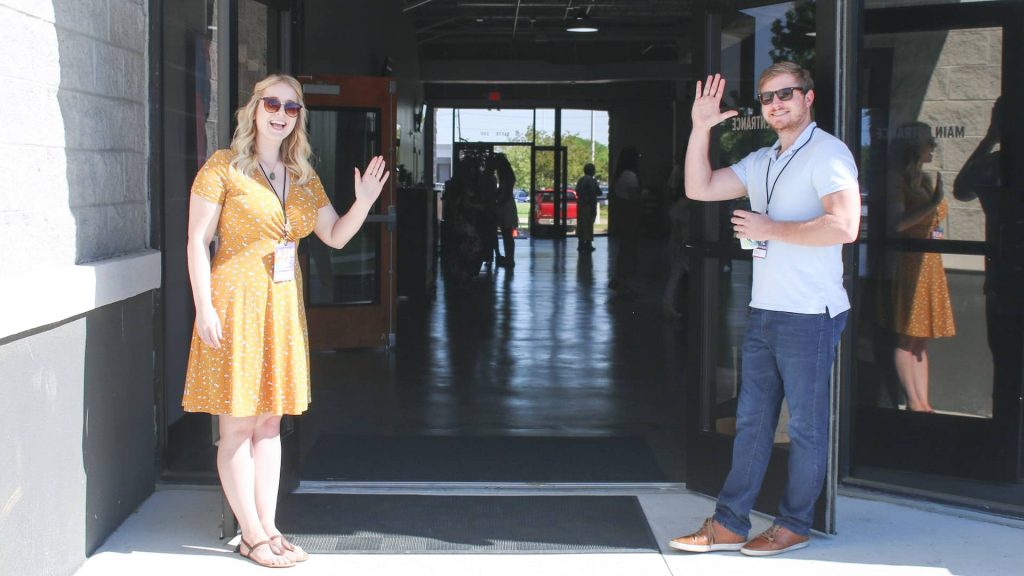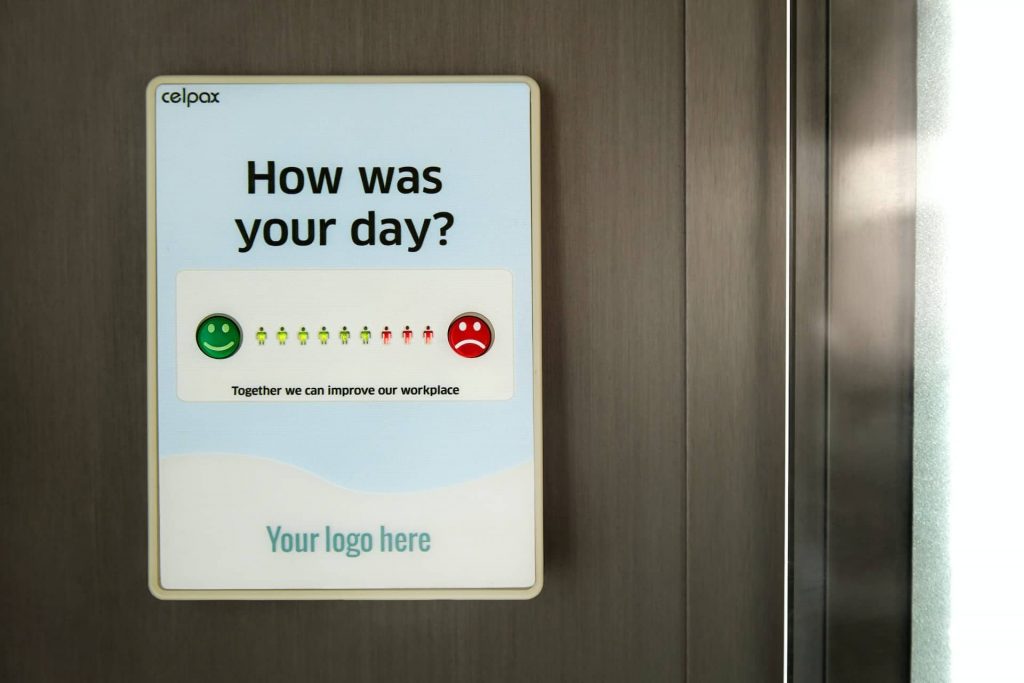Did you know that the first 90 days are crucial for building loyalty among new team members? A good Onboarding program can retain 82% of new employees. It can even improve their productivity by 70% according to the study “The cost of a bad hire” conducted by the Brandon Hall Group.
It is estimated, according to a Deloitte study, that 22% of new employees leave their new position within the first 45 days. What could this be due to? Habit. According to specialists, 21 days are the number of days needed to get used to a new habit. These new habits would include modifying the time to get up for the new job, for example.
90 days are necessary to get a 360º idea of our new position. Therefore, companies should pay great attention to their Onboarding processes, seeking to provide a great employee experience, especially during the first days of adaptation.

The onboarding process is also known as the organizational socialization process. The term onboarding is used by HR professionals to refer to the process of incorporation and adaptation of the employee. Let’s not forget that the start of onboarding should be considered from the moment the employee accepts the new job position. With a well-implemented onboarding process, multiple benefits can be achieved for both the new team member and the entire organization.
A successful onboarding process
Many companies are already putting all their machinery in place to offer an unforgettable first few days to their new employees. But there are also many that do not know where to start to create their onboarding plan. It’s not just a matter of creating a nice welcome pack that includes a T-shirt, a bottle and a corporate headset. Good onboarding is more than that. Onboarding must offer quality and transparency in all three stages: pre-onboarding, onboarding and post-onboarding.
The pre-onboarding step-by-step

In this first stage, the most bureaucratic steps of the hiring process should be made clear. A simple and detailed pre-onboarding should be created where the most relevant aspects for the adaptation to the position are indicated. What could you do?
1. Send a data registration form: for the new employee to fill in all the necessary information to formalize their hiring. As well as the request of the necessary documents. By doing this with a form, you will be able to streamline internal processes at the HR level.
2. Send the offer letter: with the details and conditions of your contract.
3. Send an email about the company’s culture: as well as the behaviors that characterize their new team. For this initiative you can even encourage the CEO to record a video where they can talk about the company’s culture.
4. Tell them what tools they will be using: this way they can do their own research and get an idea of the ways of working before they join.
5. Make them feel welcome: share a photo or anecdote about the team. You can also take the opportunity to invite them to the next team building. This way they will feel part of the team’s initiatives from the very first moment.
6. Give them access to the company’s metaverse: they will be able to configure their avatar, for example.
7. Prepare access to tools: start generating the necessary accesses for the new employee’s performance. As well as setting up the tools and their workplace.
It must be taken into account that this stage is the first formal contact with the new partner. Where the first impressions are generated. This stage can last a couple of days or even 1 or 2 months. For this reason, it is of utmost importance to be transparent and to offer confidence from this first stage.
The onboarding step-by-step

Once we have the first bureaucratic steps, the first day in the team arrives. The most exciting and also the most stressful day for the new colleagues. If we have done our homework well in the first stage of the onboarding plan, we will have everything ready so that the new colleague does not get lost in his first days.
After pre-onboarding, it is time to design a good onboarding plan. This is the key to a successful onboarding. In this second stage we must carry out a series of steps to ensure a good adaptation and thus avoid the resignation of the employee in the coming months.
We have prepared this checklist as a guide so that you don’t miss a single detail!
1. Create a detailed guide: the tools to be used, contact people, schedules and roadmap for the first days, company policies, etc. In short, all those general aspects of common interest that should be known from the first day.
2. Delivery of the welcome pack: as well as the working material necessary for their work.
3. Schedules training and one-on-one meetings: with the team leader, the HR person responsible for onboarding and the new buddy.
4. Show them their road map: where they have a clear vision of their role, objectives and expectations of their development.
5. Establish welcome dynamics: such as a coffee with the CEO. Gather new hires for a coffee with the CEO and learn first-hand about the company’s history.
6. Communicate the incorporation to the whole company: in a transparent and close way.
7. Send an employee satisfaction survey: within a week of their incorporation. This way you will be able to improve the process for future incorporations.

This second stage of the onboarding process will last approximately the first 3 months after incorporation. 3 months that will be used to give support and follow up to the new incorporations. We must listen, give and receive feedback without overwhelming the new members. It is well known that in one day, even in one week, you cannot know everything about the company.
HR professionals should create a well-structured and non-overwhelming onboarding plan to ensure a good employee experience in their first few days.
The post-onboarding step-by-step
After overcoming the first 3 months, a final step should be taken, which will aim to lay the foundations of its role and objectives. In this last stage, initiatives can be carried out such as:
- One on one follow-up meetings: with the figures involved in the onboarding where sincere and trustworthy feedback is transmitted for a good performance in the future.
- Send an employee satisfaction survey: with their new role, company, team and development.
- Review the road map: in case there have been any changes.
With this stage, a good onboarding plan will be completed. However, each company will have its own internal processes, which should be included at the most convenient stage so as not to be overwhelming and to ensure a great experience.
The employee experience cycle in the onboarding process
Keep in mind that the first 100 days in a new job mark the professional future in the company. This could affect our turnover rate. From the employee’s point of view, both positive and negative psychological tensions are generated at this stage. These tensions can be difficult to manage if we do not follow up correctly in the employee’s first days.
First stage: The crush

Therefore, it can be said that the employee’s onboarding experience undergoes different stages, as in an infatuation. It is important to identify them in order to create a good onboarding plan.
As psychologist Jonathan García-Allen explains, in that first phase of falling in love “the brain releases large amounts of dopamine, serotonin or noradrenaline, which is why when we fall in love we feel excited, full of energy and our perception of life is magnificent“. This is exactly what happens in the brain of the new employee in their first months of adaptation to the company. We call this state, in onboarding terms, “crush”.
Second stage: The landing
After falling in love, questions, doubts and uncertainty begin to arise as to whether or not the change was a good decision.

At this stage, which we will call onboarding landing, decisions begin to be made, which require negotiation and communication to move forward. Otherwise, feelings such as frustration, disappointment, anger and sadness may increase. It usually begins between the end of the onboarding stage and the beginning of post-onboarding.
This state of landing is crucial for building loyalty among newly hired employees. Maximum attention must be paid to feelings of frustration, doubt and uncertainty.
Third stage: The maturity
Once the first two stages of the employee’s experience have been overcome, the stage of maturity arrives. Here a full and mature trust in the working relationship, a 360º knowledge with errors and virtues and emotional stability will have been built. At this point, the company and the employee join forces to achieve the objectives set and make rational decisions.
KPIs for follow-up in onboarding
To measure the effectiveness of the process and thus ensure good results in the onboarding plan, it is necessary to define some measurement KPIs. These KPIs should focus on how the process affects employee experience, turnover and loyalty as well as other data related to the talent team’s objectives and results.
Retention rate
Measure how many employees decide to stay for a defined period. For example, taking into account the 100 days detected as decisive can be a starting point to see if the onboarding plan is effective.
# new hires who stay with the company for at least 100 days / # new hires in the same period = retention rate
Turnover rate
Measuring involuntary turnover, i.e., turnover resulting from voluntary departures of new hires, will help uncover failures in the hiring and/or onboarding plan. Discovering that the employee is not given a great experience in his or her first days.
(# new hires that are forced to leave in a given period / # new hires in the same period) x 100 = Involuntary turnover rate of new hires

On the contrary, if we obtain a high voluntary turnover rate, it will be a symptom that we are not attracting and selecting the right people. Detecting these results in time is crucial to correctly pivot the processes of attraction and selection of talent.
(# new hires leaving voluntarily in a given period / # new hires in the same period) x 100 = Voluntary turnover rate of new hires
It is necessary to establish this differentiation in order to discover flaws in the selection process or, on the contrary, in the onboarding process.
Employee satisfaction rate - eNPS
One of the best ways to identify satisfaction levels is with a net Promoter Score (eNPS).
To find out how satisfied new hires are, ask them to rate on a scale of 1 to 10 how likely they are to recommend the company to a colleague or friend, based on their experience during onboarding.
Those who score 9 or 10 are considered promoters. Those who score 1 to 6 are detractors. The rest in the in-between values are passive. To calculate your employee net promoter score, subtract the % of detractors from the % of promoters.
(# promoters / # total respondents) – (# detractors / # total respondents) = eNPS.

It is important to note that the eNPS will help you not only to discover the satisfaction of new recruits. The eNPS is key to improving your employer branding and attracting the best talent.
Absenteeism rate
Knowing the rate of absenteeism in new employees will help to detect their level of employee engagement, that is, their work commitment in the new position. However, as is well known, the engagement rate as such does not exist because this indicator is composed of several metrics, including the rate of absenteeism.
Therefore, it is important to analyze the absenteeism rate in a specific period of time, such as the 90 days mentioned at the beginning of this article. As we have already mentioned, this period of time is crucial for the new colleague to feel part of the team and the company.
(# days of work lost by new employees in a given period / # days worked by new employees in the same period) x 100 = absentee rate
Success rate in the progress of the training plan
As mentioned at the beginning, a good initiative to carry out in the onboarding plan is to prepare training to promote a 360º knowledge of the company. Therefore, analyzing the training KPI in onboarding will help to know how many new hires complete the training. Thus, by obtaining high results, it will be possible to determine that the proposed onboarding plan is well designed.
# of new hires who completed training in a given period / # total new hires in the same period = New hire training rate.

The right measurement for People management
We have collected the key KPIs for the correct monitoring of any onboarding plan, but there are more HR KPIs that could be measured. Like the ROI of the plan itself or the growth of the team at a specific point in time. If you want to expand your measurement reports with additional KPIs, we encourage you to take a look at the HR KPI dashboard template we have available.
Achieving a strategically designed onboarding plan that lasts over time is not an easy task, as it entails a large investment of time and resources. As mentioned above, providing a great employee experience during the first days of their incorporation guarantees loyalty, commitment and satisfaction of the team.
Measuring any process or change carried out in the company that impacts the employee experience is crucial to make the best decisions and stand out from the competition. That’s why Nailted helps companies get a complete and always up-to-date view of employee satisfaction and engagement. This makes it much easier to avoid or reduce turnover, the biggest problem facing any HR department.










